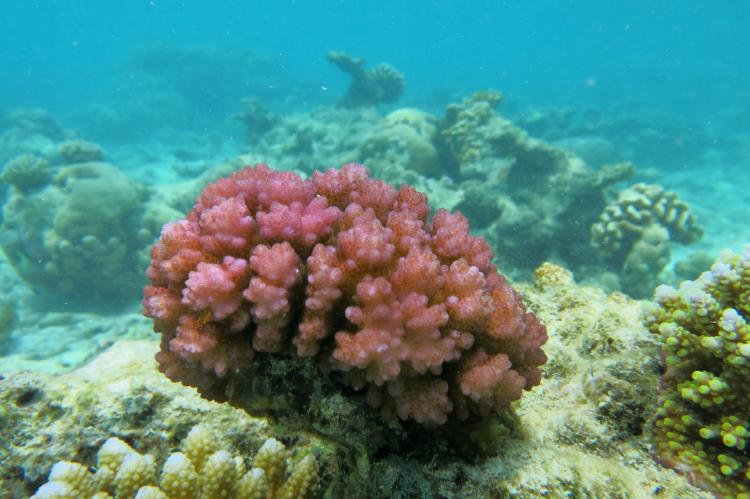Reef corals utilize pink and purple hues as sunscreen
In the shallow water of coral reefs, light levels are often harmful to the symbiotic algae living inside corals.
New research by the University of Southampton has revealed corals utilize pink and purple hues as protective sunscreen from damaging sunlight. Many reef corals require light to survive, benefiting from sugars and lipids produced by their light-dependent symbiotic algae. However, in the shallow water of coral reefs, light levels are often higher than required. Ironically, the very sunlight they need can also be their downfall. Apart from temperature, light stress is a major contributor to coral bleaching, the loss of symbiotic algae that threatens the very survival of coral reefs.
Chromoproteins
Working in the Great Barrier Reef and under controlled conditions in the Coral Reef Laboratory of the University of Southampton, researchers produced experimental evidence that pink and purple chromoproteins act as sunscreens for the symbiotic algae by removing elements of the light that could be potentially harmful.
The higher light intensity switches on the genes that are responsible for the production of the sun screening chromoproteins.
—Study leader Dr Jörg Wiedenmann
"The beautiful pink and purple hues that are produced by the coral host are often evoked by chromoproteins; pigments that are biochemically related to the green fluorescent protein (GFP) of the jellyfish Aequorea victoria,” said study leader Dr Jörg Wiedenmann, Senior Lecturer of Biological Oceanography and Head of the University's Coral Reef Laboratory.
“In contrast to their green glowing counterpart, the chromoproteins take up substantial amounts of light, but they don't re-emit light. GFP-like proteins were suggested to contribute to the protection of corals and their symbionts from excess sunlight,” explained Dr Wiedenmann.
"These growing areas contain essentially no symbiotic algae, so much of the light is reflected by the white coral skeleton instead of being used by the algae. Hence, it seems that the corals use a clever trick to help their symbionts. The higher light intensity switches on the genes that are responsible for the production of the sun screening chromoproteins.”
Healing properties
In addition, researchers proposed an explanation for as to why some corals accumulate exceptionally high amounts of chromoproteins in growing areas such as branch tips or in the vicinity of healing wounds.
Results suggest the screening effect of chromoproteins help the algae enter the new tissue. Once the symbiont population is fully established, light levels in the tissue decrease as the algae utilize most of the light for photosynthesis. Consequently, the genes of the chromoproteins are switched off again, allowing the coral to save the energy required for their production.
The research contributes to a better understanding of the coral's response to environmental stress, an important requirement to help predict the fate of coral reefs exposed to climate change and anthropogenic disturbances.


